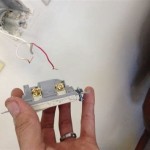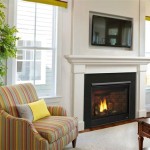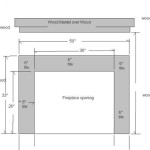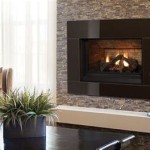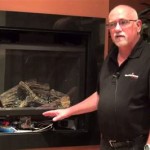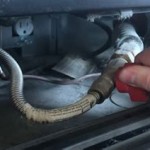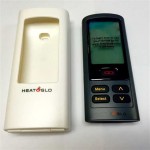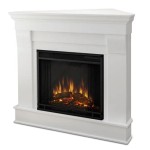Prefab Fireplace Inserts: A Comprehensive Overview
Prefabricated fireplace inserts represent a significant advancement in home heating technology, offering a combination of efficiency, aesthetic appeal, and ease of installation. These inserts are designed to fit directly into existing masonry fireplaces, transforming them from often inefficient, drafty structures into sources of reliable and controlled heat. Understanding the benefits, types, and considerations associated with prefab fireplace inserts is crucial for homeowners looking to improve their heating capabilities and enhance the ambience of their living spaces.
Unlike traditional open fireplaces, which can lose a significant amount of heat up the chimney, prefab inserts are engineered for high efficiency. They feature closed combustion systems that maximize heat output and minimize heat loss. This increased efficiency translates to lower heating bills and a reduced environmental impact, as less fuel is burned to achieve the same level of warmth. The controlled combustion also reduces the production of harmful emissions, contributing to improved indoor air quality.
Prefab inserts are available in a variety of fuel types, including wood, gas, and electric. This allows homeowners to select an option that best suits their needs, preferences, and available resources. Each fuel type offers distinct advantages and disadvantages in terms of heating capacity, fuel cost, and environmental considerations.
Increased Heating Efficiency
The fundamental advantage of a prefab fireplace insert lies in its ability to drastically improve heating efficiency compared to a traditional open fireplace. Open fireplaces can be notoriously inefficient, with a significant portion of the heat generated escaping directly up the chimney. This is due to the convective airflow that draws warm air from the room and expels it outdoors. A prefab insert, on the other hand, creates a closed combustion system. This means that the fire is contained within a sealed chamber, and the heat generated is circulated more effectively into the room.
Modern prefab inserts incorporate features such as blowers and heat exchangers to further enhance efficiency. Blowers circulate heated air into the room, distributing warmth more evenly and rapidly. Heat exchangers capture heat from the exhaust gases and transfer it to the air circulating in the room, preventing waste and maximizing heat recovery. These features, combined with the closed combustion system, enable prefab inserts to achieve significantly higher heating efficiencies, often exceeding 70% or even 80%. This translates to lower fuel consumption and reduced heating costs.
The improved efficiency also has a positive impact on the environment. By burning fuel more completely and reducing heat loss, prefab inserts produce fewer emissions and contribute to a smaller carbon footprint. This is particularly important for homeowners who are concerned about the environmental impact of their heating choices.
Variety of Fuel Options and Aesthetics
Prefab fireplace inserts are available in a diverse range of fuel options to cater to different preferences and practical considerations. The most common fuel types are wood, gas (natural gas or propane), and electricity. Each fuel type has its own set of advantages and disadvantages.
Wood-burning inserts offer the traditional ambiance and warmth of a real wood fire. They are a popular choice for homeowners who enjoy the aesthetic appeal and the crackling sound of burning wood. However, wood-burning inserts require a supply of wood, which can be stored and handled. They also require regular maintenance, including ash removal and chimney cleaning. The efficiency of wood-burning inserts varies depending on the model and the type of wood used.
Gas inserts offer the convenience of instant ignition and adjustable heat output. They are a cleaner-burning option compared to wood and require less maintenance. Gas inserts can be fueled by natural gas or propane, depending on the availability of a gas line. They are available in a variety of styles and designs to match different home decor. Gas inserts are often equipped with realistic-looking artificial logs and flame effects.
Electric inserts are the easiest to install and operate. They do not require a chimney or venting system, making them suitable for homes without existing fireplaces. Electric inserts use electric heating elements to generate heat, and they are often equipped with realistic flame effects. They are a convenient option for supplemental heating and can be used in any room with an electrical outlet. However, electric inserts typically have lower heating capacity compared to wood or gas inserts.
Beyond fuel type, prefab fireplace inserts come in a wide array of styles and designs. From traditional to contemporary, there is an insert to complement any home's aesthetic. Options include different finishes, trim styles, and hearth designs. The ability to customize the appearance of the insert is a significant advantage, as it allows homeowners to seamlessly integrate the insert into their existing decor.
Simplified Installation and Maintenance
Prefab fireplace inserts are designed for relatively straightforward installation, especially when compared to constructing a new fireplace from scratch. They are typically designed to fit directly into existing masonry fireplace openings, minimizing the amount of structural modification required. However, professional installation is highly recommended to ensure proper venting, gas line connections (if applicable), and electrical wiring.
The installation process generally involves preparing the existing fireplace opening, installing a chimney liner, connecting the fuel source (gas or electricity), and securing the insert into place. The chimney liner is a crucial component, as it ensures proper venting of exhaust gases and prevents carbon monoxide from entering the home. Proper installation is essential for safety and optimal performance.
Maintenance requirements vary depending on the fuel type of the insert. Wood-burning inserts require regular ash removal and chimney cleaning to prevent creosote buildup, which can be a fire hazard. Gas inserts require periodic inspection and cleaning of the burner assembly and venting system. Electric inserts typically require minimal maintenance, aside from occasional cleaning of the heating elements.
Proper maintenance is essential for prolonging the life of the insert and ensuring its continued efficiency and safety. Following the manufacturer's recommendations for maintenance and scheduling regular professional inspections can help to prevent problems and keep the insert operating at its best.

Zero Clearance Vs Prefabricated Fireplace Full Service Chimney

New Wood Burning Prefab Fireplaces Complete Fireplace Installs

All About Prefabricated Fireplaces Chimney Savers

New Wood Burning Prefab Fireplaces Complete Fireplace Installs

Prefab Linear Fireplaces Expert Fireplace Installation In Your Home

Get A New Fireplace Insert In Orangeburg Sc Changeouts

Installing Inserts Into Prefab Fireplaces Arlington Tx Black Velvet

Superior Prefab Wrt Wct 3000 Pro Series Indoor Fireplace Bollens Antique Hearth Llc

Prefab Linear Fireplaces Expert Fireplace Installation In Your Home

What Is A Prefabricated Fireplace Kansas City Service
Related Posts

